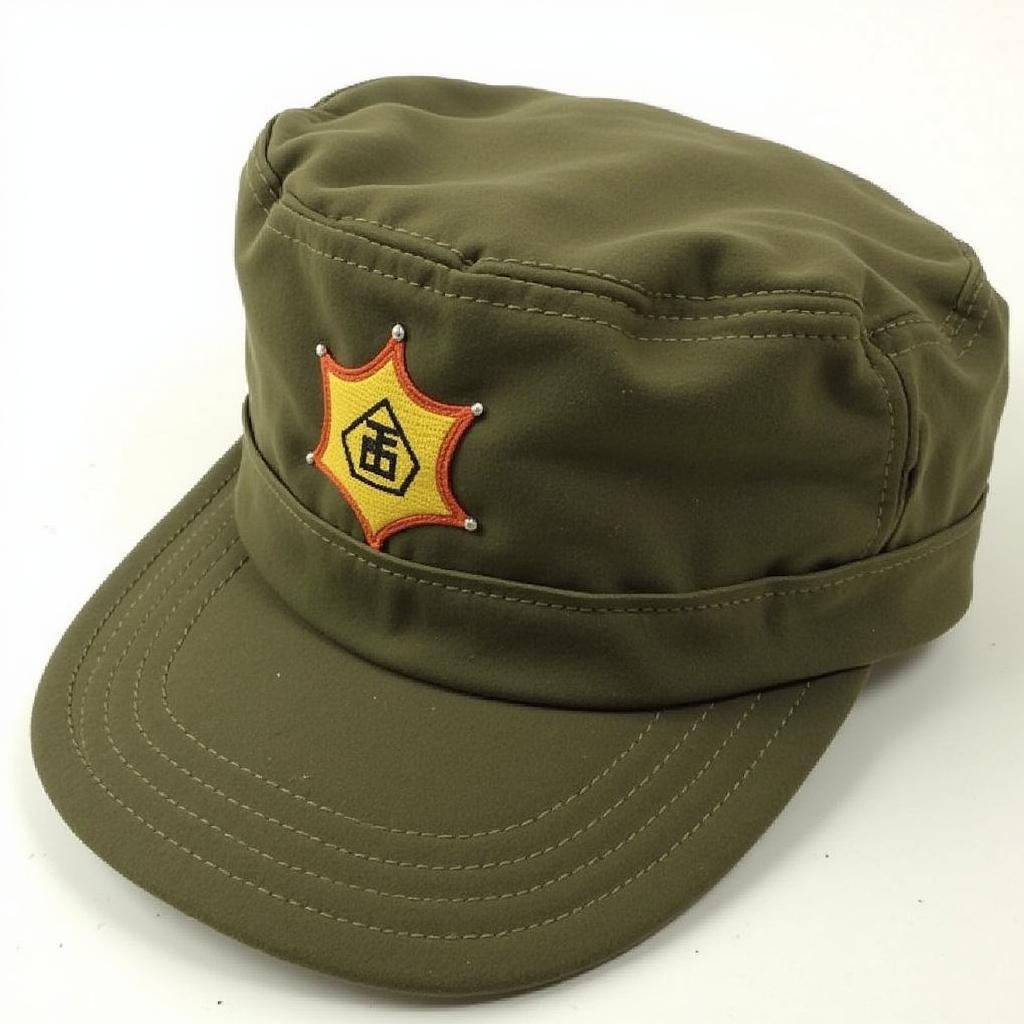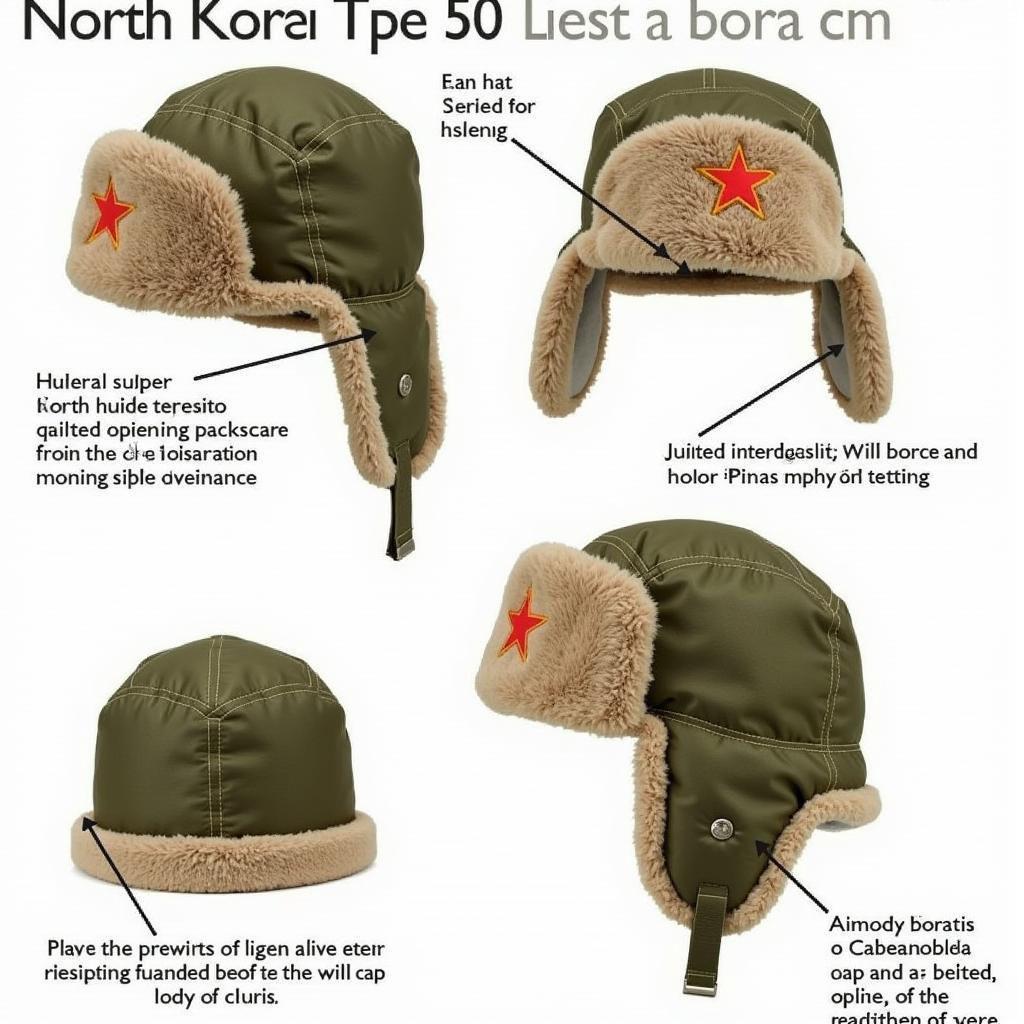Korean War Caps: A Collector’s Guide
October 29, 2024Korean War Caps offer a tangible connection to a pivotal moment in 20th-century history. These military head coverings, worn by soldiers on both sides of the conflict, are more than just artifacts; they represent the sacrifices, strategies, and stories of the Korean War. Understanding their significance can deepen our appreciation for this often-overlooked conflict.
After the opening paragraph, we will delve into the world of Korean War caps, exploring their different types, historical context, and collecting aspects. This guide will provide you with valuable insights into these fascinating pieces of military history.
Understanding Korean War Caps: Types and Significance
Korean War caps varied considerably depending on the nation, branch of service, and rank of the wearer. U.S. forces commonly wore the M1948 field cap, often nicknamed the “garrison cap,” while South Korean soldiers frequently sported similar caps with distinct national markings. North Korean and Chinese troops utilized a variety of caps, including the Type 50 and the ushanka, reflecting the influence of Soviet military design.
The Symbolism Behind the Headgear
Beyond their practical function of providing protection from the elements, these caps served as powerful symbols of national identity and military affiliation. The distinct designs and insignia allowed soldiers to quickly identify friend from foe on the chaotic battlefield.
For collectors today, Korean War caps offer a unique glimpse into the lives of the men and women who served in this conflict. Each cap carries its own story, whispering tales of bravery, hardship, and resilience.
 US Army Field Cap from the Korean War
US Army Field Cap from the Korean War
Collecting Korean War Caps: Tips for Beginners
Starting a collection of Korean War caps can be a rewarding experience. However, it’s essential to approach it with knowledge and caution. Here are some tips to guide novice collectors:
- Authenticity: Be wary of reproductions and fakes. Examine the cap’s construction, materials, and markings carefully.
- Condition: Look for caps in good condition, with minimal wear and tear. Minor flaws are acceptable, but avoid caps with significant damage.
- Provenance: Whenever possible, try to obtain information about the cap’s history, such as the soldier who wore it and the unit they served in.
- Research: Educate yourself about the different types of Korean War caps and their value. Numerous resources, including books, websites, and online forums, can provide valuable information.
Preserving Your Collection
Once you’ve acquired Korean War caps, it’s crucial to preserve them properly. Store them in a cool, dry environment, away from direct sunlight and moisture. Avoid handling them excessively, as this can cause damage.
 North Korean Type 50 Winter Cap
North Korean Type 50 Winter Cap
Why Collect Korean War Caps?
Beyond their historical significance, Korean War caps can be valuable investments. Their rarity and historical importance make them sought-after items among collectors.
“The Korean War is often referred to as the ‘Forgotten War,’ but these caps serve as a powerful reminder of the sacrifices made during this critical period,” states Dr. David Lee, a renowned military historian specializing in the Korean War. “They are tangible pieces of history that connect us to the past.”
Furthermore, collecting these caps can be a deeply personal and enriching experience. It allows individuals to connect with history on a tangible level and to learn more about the individuals who fought in the Korean War. “These caps aren’t just artifacts; they’re stories waiting to be told,” adds Lee.
Conclusion: The Enduring Legacy of Korean War Caps
Korean War caps offer a tangible link to a significant historical event. They are more than just pieces of military equipment; they are symbols of courage, sacrifice, and the human cost of war. By collecting and preserving these caps, we honor the memory of those who served and ensure that their stories are not forgotten. So, embark on your collecting journey and discover the fascinating world of Korean War caps.
FAQ
- What are the most common types of Korean War caps? The M1948 field cap (US), Type 50 (North Korea/China), and similar caps with national markings (South Korea) are among the most common.
- How can I tell if a Korean War cap is authentic? Careful examination of construction, materials, and markings is crucial. Consulting with experts or reputable dealers is also recommended.
- Where can I buy Korean War caps? Online marketplaces, military antique shops, and specialized dealers are good places to start.
- What is the average price of a Korean War cap? Prices vary depending on factors like rarity, condition, and historical significance.
- How should I store my Korean War cap collection? Store them in a cool, dry place, away from direct sunlight and moisture.
Common Scenarios and Questions
- Scenario: You find a Korean War cap at a flea market but are unsure of its authenticity. Question: What steps should you take to verify its authenticity before purchasing?
- Scenario: You inherit a Korean War cap from a family member who served in the conflict. Question: How can you research the history of the cap and the individual who wore it?
Further Exploration
Looking for more information on related topics? Check out our article on korean oracle cards.
For any assistance, please contact us via Phone: 0963418788, Email: [email protected] or visit our address: 2M4H+PMH, Phường Nghĩa Thành, Gia Nghĩa, Đắk Nông, Việt Nam. Our customer service team is available 24/7.